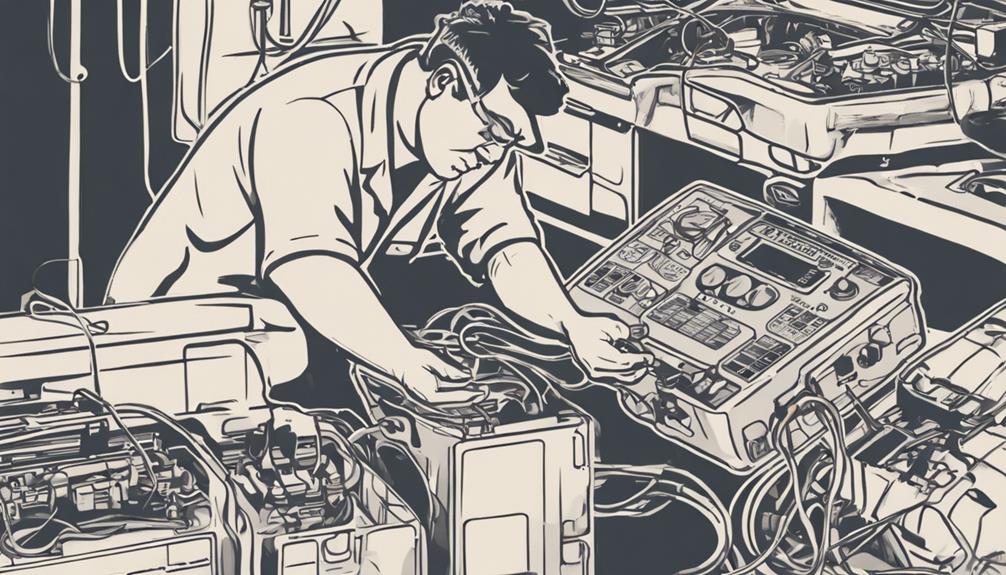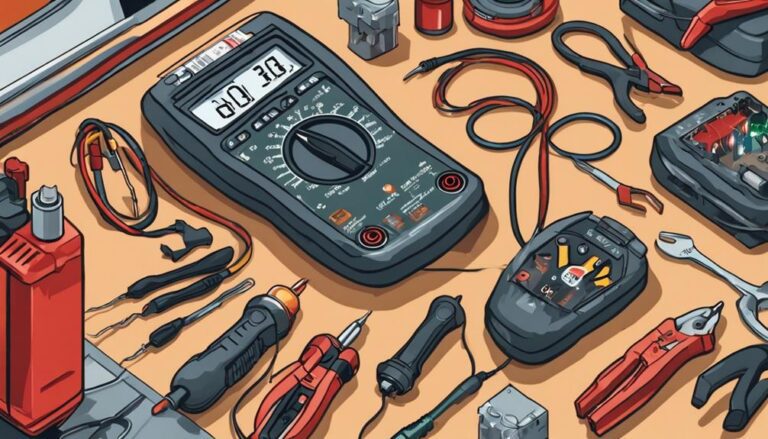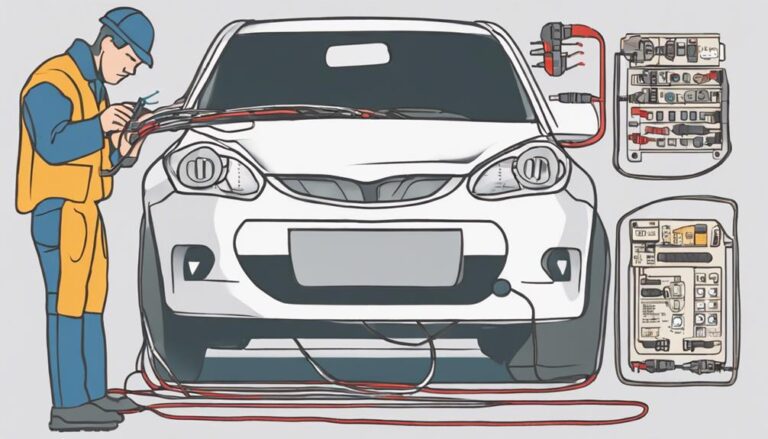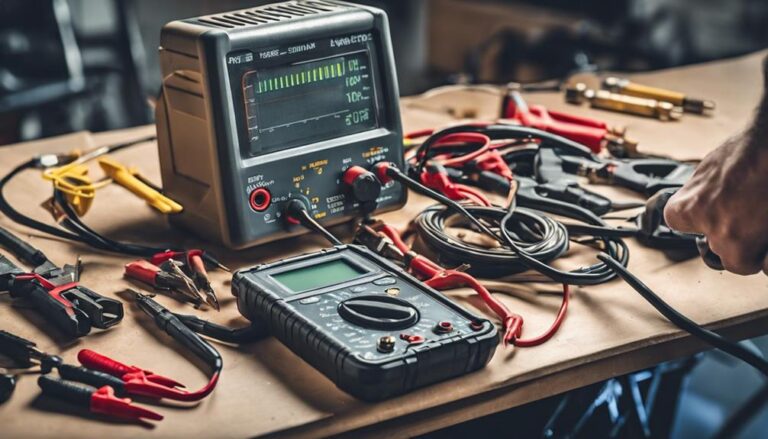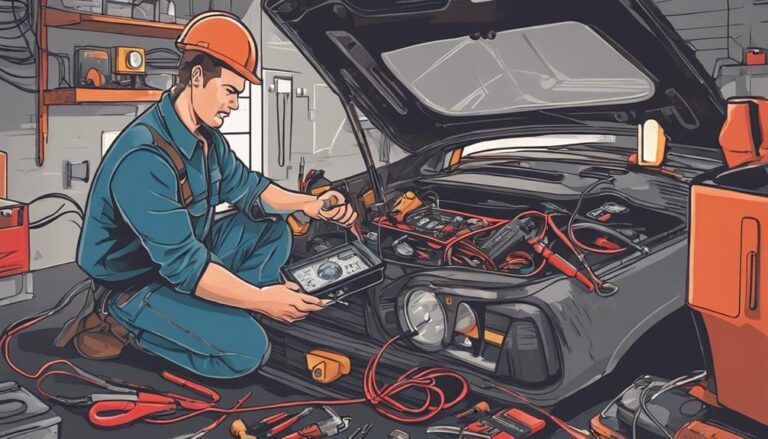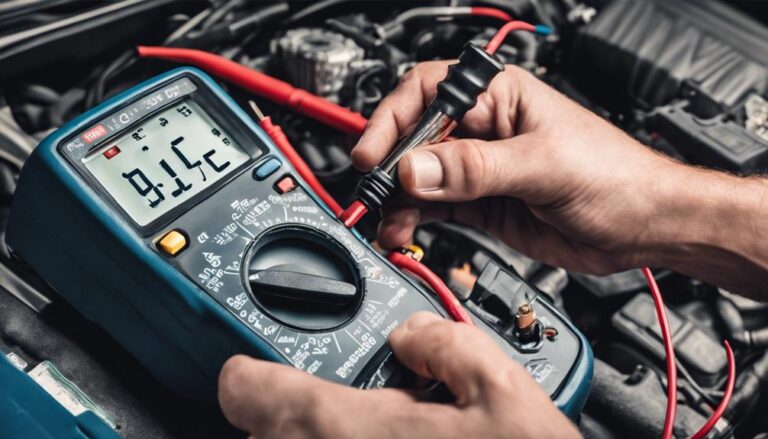Diagnosing Common Car Electrical Problems: 3 Tips
When it comes to diagnosing common car electrical problems, the old saying goes, 'An ounce of prevention is worth a pound of cure.'
Picture this: you're driving down the road, and suddenly, your dashboard lights start flickering. What could be causing this?
Stay tuned to discover three essential tips that could help you pinpoint and resolve those pesky electrical issues lurking in your vehicle.
Key Takeaways
- Regular maintenance prevents severe electrical issues.
- Promptly address dimming lights to avoid further problems.
- Utilize multimeters for efficient diagnosis of electrical faults.
- Visual inspections help identify damage and loose connections quickly.
Symptoms of Electrical System Issues
If you notice dimming or flickering lights in your car, it could be a sign of issues with the alternator or a weak battery. Common causes of dimming lights include a failing alternator that isn't charging the battery properly or a weak battery that can't hold a charge. These issues can lead to electrical system malfunctions, affecting accessories like power windows or the radio.
To diagnose these problems, diagnostic tools like a multimeter can be used to test the voltage output of the alternator and the battery. A voltage reading below the specified range indicates a potential problem with either component. Additionally, frequent battery problems may indicate an underlying alternator failure.
Therefore, it's crucial to address dimming or flickering lights promptly to prevent further electrical issues in your car. Remember, addressing these symptoms early can save you from more severe problems down the road.
Visual Inspection Techniques
To ensure your car's electrical system remains in optimal condition, begin by conducting a thorough visual inspection of key components such as the battery terminals, alternator, starter, and fuse box for any signs of damage or loose connections.
Start by examining the battery terminals for any corrosion buildup, which can hinder the flow of electricity. Check the alternator for loose connections and ensure the belt driving it's in good condition. Inspect the starter for any visible damage that may affect its performance. Additionally, carefully evaluate the fuse box for melted fuses or signs of overheating, indicating potential issues within the electrical system.
A detailed wiring inspection is crucial to identify any damaged or frayed wires that could lead to electrical malfunctions. By conducting regular visual inspections and addressing any findings promptly, you can prevent major electrical problems and ensure your car operates smoothly.
Multimeter Testing for Diagnosis

How can a multimeter aid in diagnosing electrical issues within your car's system? Multimeters are indispensable tools for troubleshooting car electrical problems, offering precise measurement of voltage, current, and resistance. By utilizing multimeter techniques, you can efficiently pinpoint faults such as voltage drops or irregularities that may indicate underlying issues with components like alternators, batteries, or wiring. This diagnostic approach ensures accurate identification of problematic areas within the electrical system. To streamline the process, consider the following table outlining multimeter testing strategies:
| Multimeter Testing Strategies | Description | Benefits |
|---|---|---|
| Voltage Testing | Measures electrical potential difference | Identifies power supply issues |
| Continuity Testing | Checks for uninterrupted flow of current | Locates breaks in circuits |
| Resistance Testing | Assesses the opposition to current flow | Pinpoints faulty components |
Frequently Asked Questions
How Do You Diagnose Electrical Problems in a Car?
To diagnose electrical problems in a car, start by testing battery voltage and alternator output for fluctuations. Use a multimeter to troubleshoot and check for battery drain. Inspect wiring for damage, test components, and seek professional help when needed.
How Do You Diagnose an Electric Car?
To diagnose an electric car, monitor charging stations, battery lifespan, and infrastructure. Maintain battery health, track energy consumption, and check power distribution. Utilize diagnostic tools, understand regenerative braking, and analyze electronic control systems for a thorough diagnosis.
What Are Three Important Components of a Car's Electrical System?
When it comes to your car's electrical system, three key components are vital: the battery provides power, the alternator charges it, and the starter motor ignites the engine. Proper maintenance and testing ensure smooth operation.
What Are the 10 Common Electrical Problems and Solutions?
You can troubleshoot common car electrical problems like battery issues, alternator problems, spark plug malfunctions, and faulty wiring. Test components, check wiring integrity, and replace defective parts to maintain optimal vehicle performance and safety.
Conclusion
In conclusion, by observing dimming lights, malfunctioning accessories, and frequent battery issues, you can effectively diagnose common car electrical problems.
With a keen eye and some basic tools, troubleshooting becomes a straightforward task.
Remember, staying proactive in maintaining your vehicle's electrical system can mean the difference between smooth sailing and a potential electrical meltdown.

